EDC
This page contains my EDC – short for everyday carry – items that I have on me on a daily basis. It’s an honest listing of things I’m actually using and hence convinced of their quality and usefulness. Therefor this page does not contain any referral links to the items.

Bags
I have two EDC bags: The Aer Day Sling 3 X-Pac and the Aer Travel Sling 2 X-Pac. Depending on whether I need to bring my laptop or not, I’m using either the Travel Sling or the smaller Day Sling. As both options are fairly sufficient in terms of size, I rarely need to take both bags or even an actual backpack with me.
I used to lug around an Aer Duffelpack – a ~21 L mix between a duffel and a backpack – when I was still regularly commuting to offices or co-working spaces, back in 2017. However, for the past years, I did not need a backpack on a day-to-day basis.
Check out the luggage page for more info on bags and backpacks.
Wallet
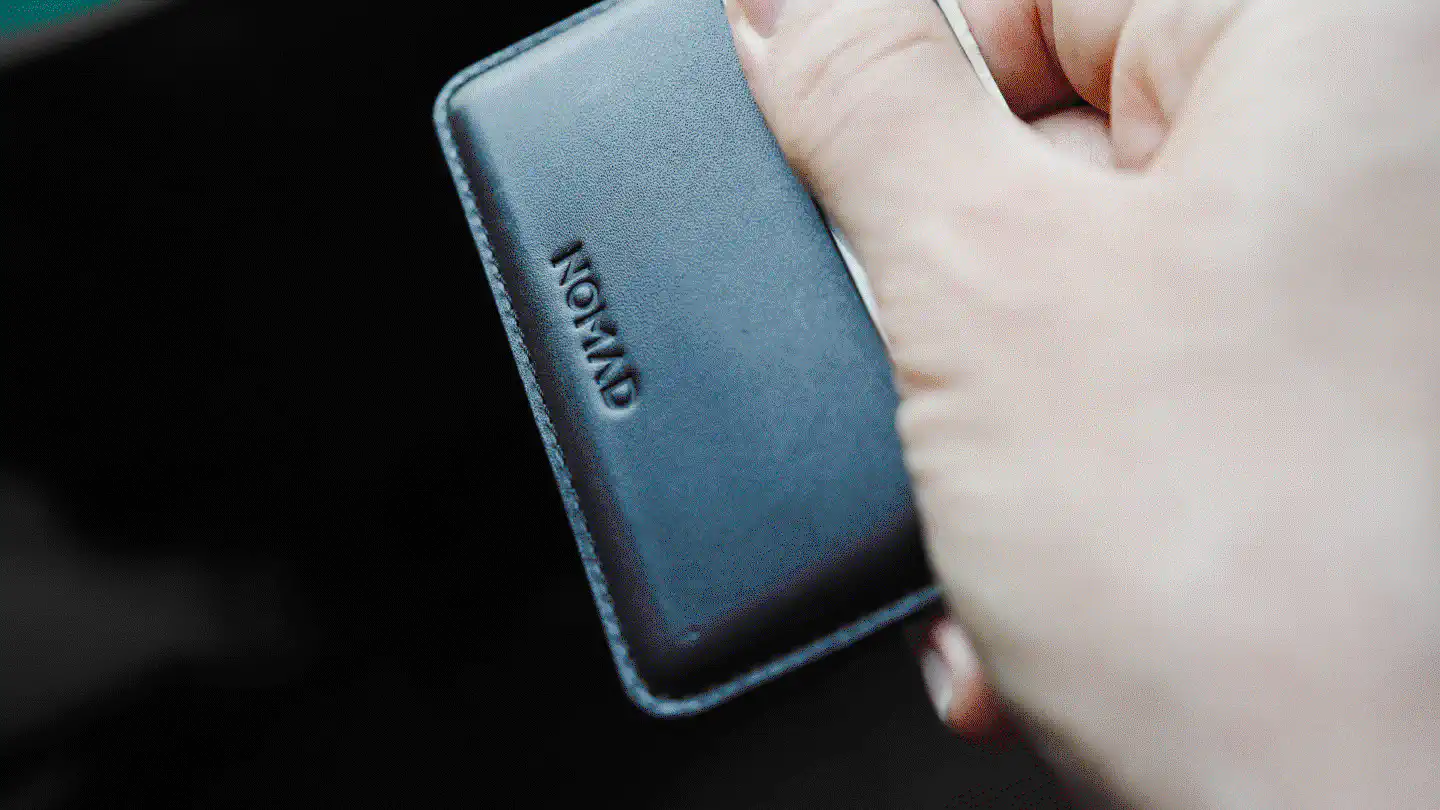
My wallet of choice is a black Nomad Horween leather card wallet. I picked it up fairly recently after my previous Quicksilver Floker card holder disintegrated throughout the past 3 years, and the one previous to that – a red Louis Vuitton x Supreme slender wallet – got stolen during a trip to Lisbon, Portugal.
I’m a big fan of minimalist, thin wallets that can easily fit in my pocket, without bulging out my pants. Each of these three wallets ticked that box, yet with each new wallet the amount of available space shrank – which is a good thing.
With the Supreme wallet I used to carry around plenty of cards all the time: My ID card, multiple credit cards, an insurance card, driving license, membership cards, and so on. When it got stolen I learned the hard way what it means to lose nearly all credit cards and important documents at once. That made me rethink what documents/cards I should be carrying around all the time and which of them I should only have on me when I truly need them.
For example, membership cards are a waste of space 99% of the time, since you’re probably not heading to the stores every other day. Similarly, a driving license for me doesn’t need to be an everyday carry, because I’m rarely driving a car.
As for credit cards, instead of carrying around multiple ones, I carry one or a maximum of two and cash. I prefer to pay either cash or crypto, especially in places where credit terminals might not be trustworthy and/or reliable enough. Besides, I don’t like credit card companies tracking my movement throughout the day. So unless it’s a very large sum, or the place doesn’t accept either cash or crypto, I always prefer these options over swiping any of my plastic cards across the terminal.
Disclaimer: On my iOS device I have most of my cards available for use with Apple Pay. However, I basically never use Apple Pay unless I run into issues I could otherwise not overcome. Apple Pay is basically a last resort option for emergencies.
NFC
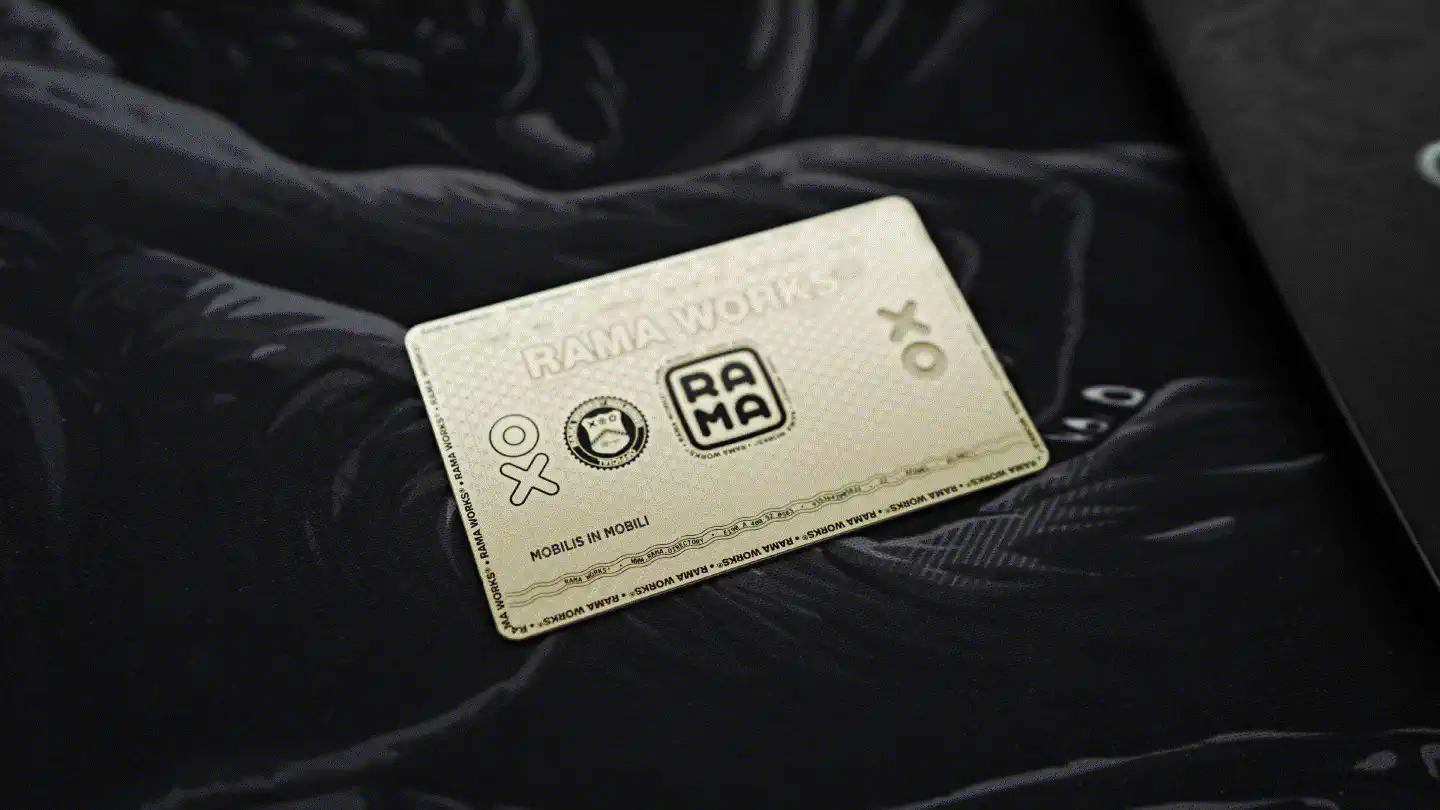
In addition, I have a RAMA WORKS SS NFC CARD 03, onto which I copied an entry token using the Flipper Zero. The NFC card contains a custom engraving that reads Mobilis in Mobili.
Cryptocurrencies
While I do have multiple crypto hardware wallets, I carry around a sufficient amount of crypto coins in a software wallet. There is a wide range of crypto wallets available for my primary phone, e.g. Unstoppable Wallet, Cake Wallet, and Status.
Wristwatch

I have a Garmin tactix 7 AMOLED that I keep on me all the time, with its Bluetooth and WiFi turned off at all times. Its main purposes are telling the time and measuring my biophysical activity (heart rate, oxygen saturation, stress, …). Apart from these things, it does a great job of tracking workouts, giving me a map and navigation on my wrist, and providing me with a portable flashlight.
Due to its rather larger diameter and hence bigger display I can read it fairly well even at an arm’s length distance. The watch has an 10 ATM water rating and allows me to carelessly submerge it while swimming, showering or washing hands.
Another thing that I appreciate big times on the Garmin over, let’s say, an Apple Watch is battery life. Due to the tactix’s low power usage, the watch usually survives around 28 days before I need to recharge it using Garmin’s USB-C charger. Compared to having to charge an Apple Watch literally every night the Garmin is so much more stress-free in that regard!
Watchbands
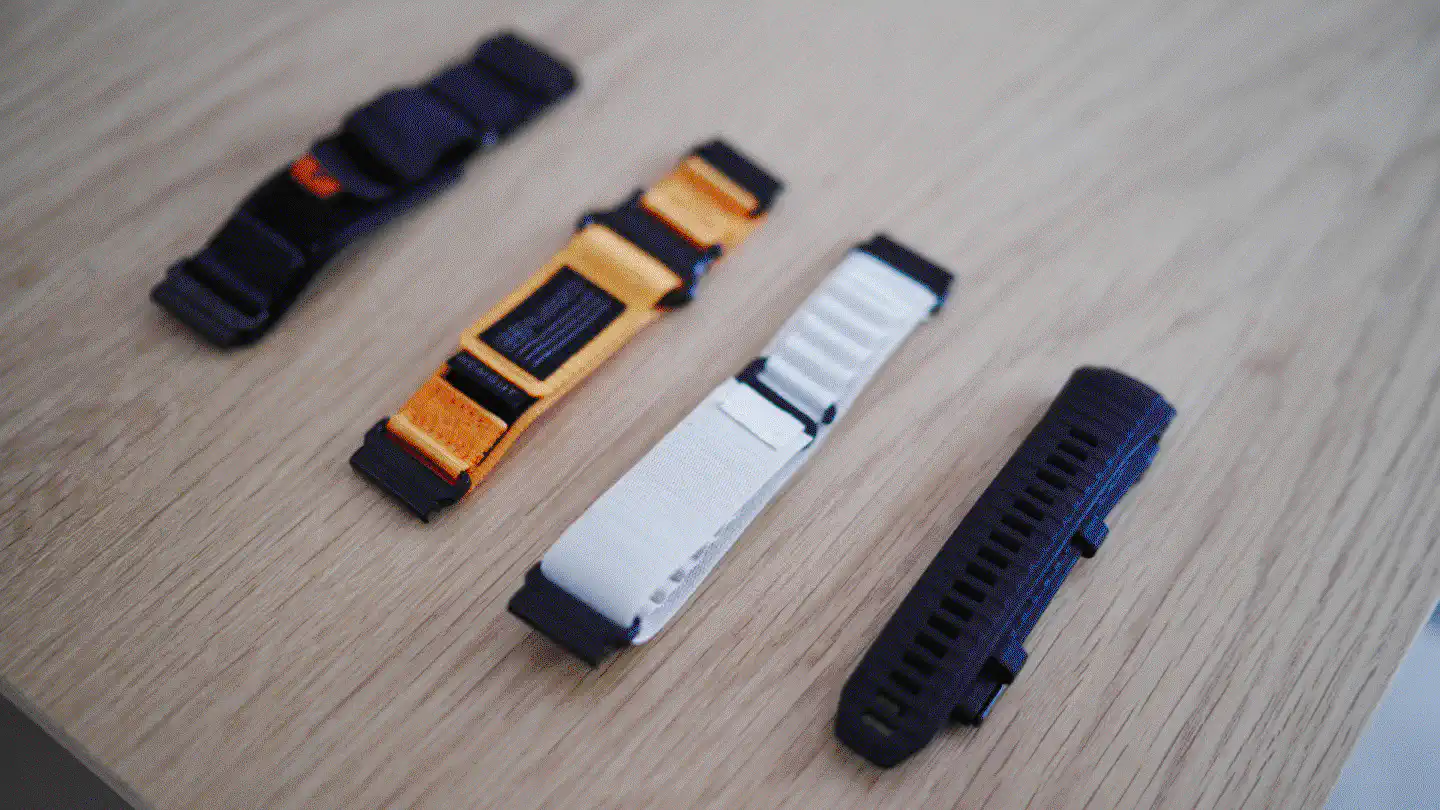
My everyday watch band is the official Garmin silicone band that comes with the tactix, but I also have a fair amount of of third-party watchbands that I found on Aliexpress. I use different watch bands for different occasions.
Flashlight
The Garmin watch comes with an integrated flashlight that can easily be
activated by double pressing the CTRL button. While all smartphones these days
offer a flashlight, it’s nevertheless a lot more handy to always have it readily
available on my wrist, rather than having to take out my phone, unlock it, pull
down the shortcut tiles (Android), and tap the Flashlight button. With the
Garmin, my hands remain free all the time and unlike e.g., with the Apple Watch,
I don’t have to twist my arm in a weird way to point the light onto e.g. the
ground in front of me. Besides the Garmin’s flashlight is significantly brighter
than the one on the Apple Watch.
Phone

My primary phone is a Google Pixel 8 running GrapheneOS without any of the Google services. It is part of my EDC and it’s the phone that has mobile data wherever I go, sharing it through its hotspot feature with my other phones and computers, if needed.
More details about the phone and its software can be found on its dedicated phone page.
Earphones

I use the nothing ear stick earphones together with my primary phone. Even though I have other audio equipment, the ear stick earphones are the most portable ones, offering acceptable sound quality, a decent microphone for calls, and all that at 50% the price of Apple’s AirPods. Also, the nothing ear stick is one of the few non-in-ear earphones available these days. I cannot stand in-ears, hence most options aren’t for me.
Keys
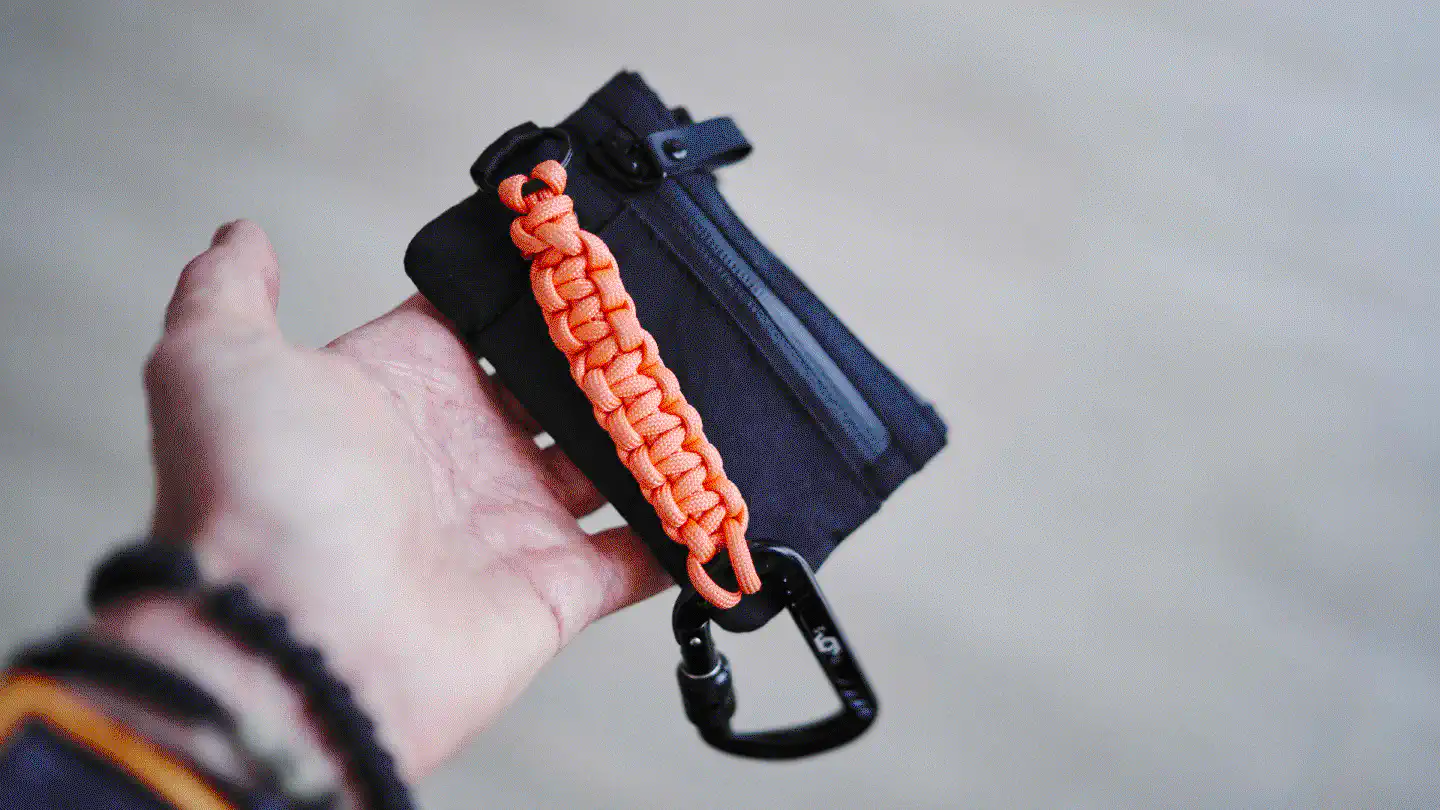
My key ring contains keys, a phone SIM slot opener, a miniature gasoline lighter, and a tiny SanDisk USB drive, which are all attached to the inside of an ALPAKA Zip Pouch Pro using a short paracord strap. Additionally, I keep a stack of cash in the pouch, just in case I forget/lose/get my wallet stolen while on the go.
I keep the pouch on a knotted paracord strap, which is attached to a carabiner so that I can fasten it to my bag or one of my pants’ belt loops. The strap – which I made from 5/32" 550 III Paracord – allows me to tuck away the pouch into my pants’ front or back pocket and not have it dangling around.
I do not recommend the ALPAKA pouch, as it is way too expensive for what it is. It is slightly too small to comfortably hold the few items I have, yet too big to be comfortably tucked away. Unless you find it being sold for less than $15 better go for a different option.
Flipper Zero

The Flipper isn’t exactly an EDC, although I have it with me regularly. I had initially planned to carry it inside the ALPAKA pouch I use for my keys, but unfortunately the pouch turned out way smaller than anticipated and barely offers even just enough room for my keys.
The Flipper has multiple NFC key cards stored, that I use for entering different
facilities. Additionally I have several IR devices that I control using the
Flipper. When I’m on travel I clone hotel key cards onto it, so that I don’t
have to carry around another card in my pocket.
I also use the Flipper for fun things.
Power Bank
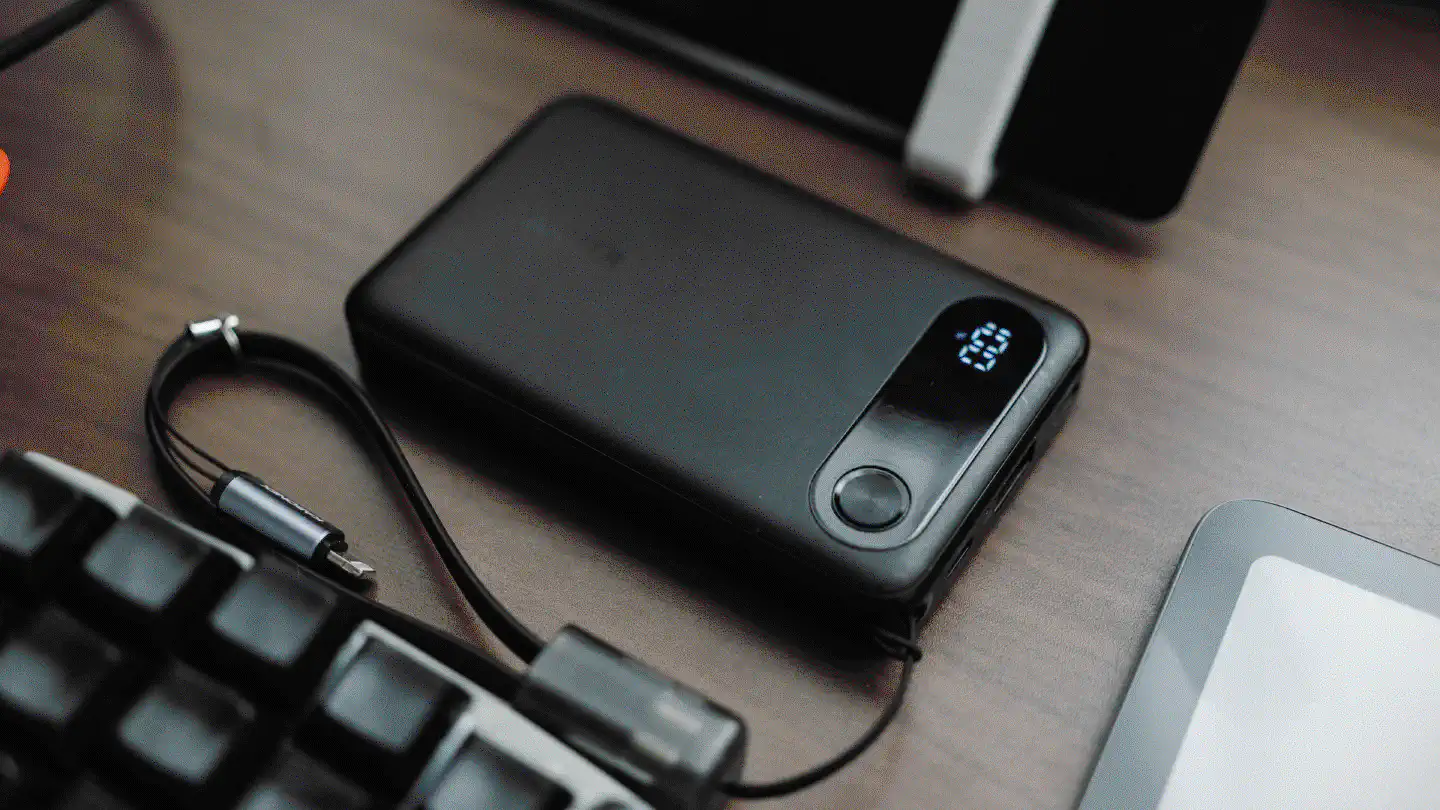
I’m using the Anker A1257 as an everyday carry item to make sure neither my phone nor my tablet ever runs out of juice. I used to use the series 7 Anker Prime 20,000mAh power bank (A1336) before – which has two USB-C, each outputting 100W max, and one USB-A port, outputting 65W max – but it is too big and heavy as an everyday carry item.
The A1257 is a 10,000mAh power bank that does 22.5W maximum. It has a small display that shows its battery level and whether something is connected to either of its ports.
It is a lot more compact than the A1336, that is 124.50mm x 53.34mm x 48.26mm in size and weighs roughly half a kilogram.
Enjoyed this? Support me via Monero, Bitcoin or Ethereum! More info.